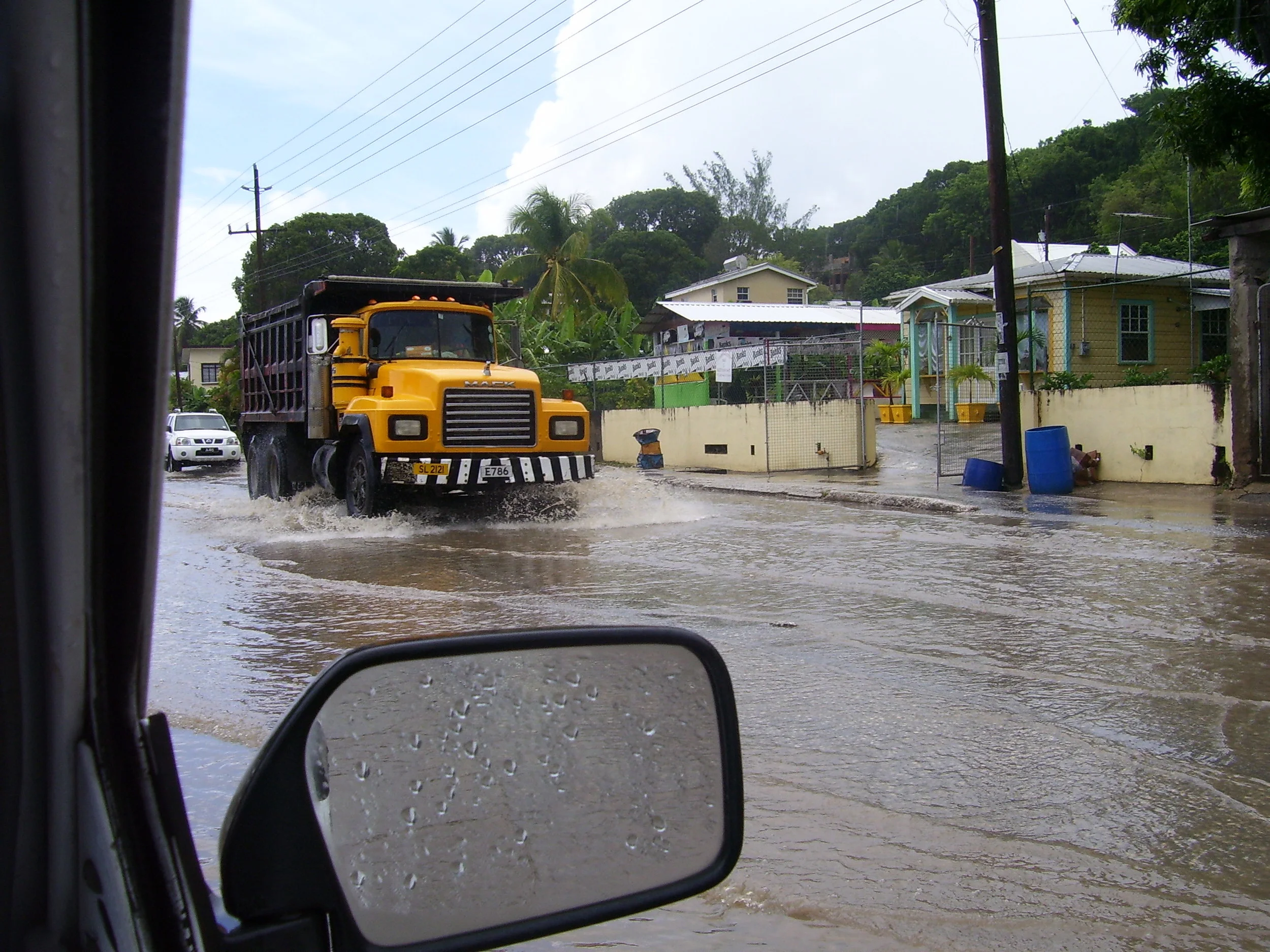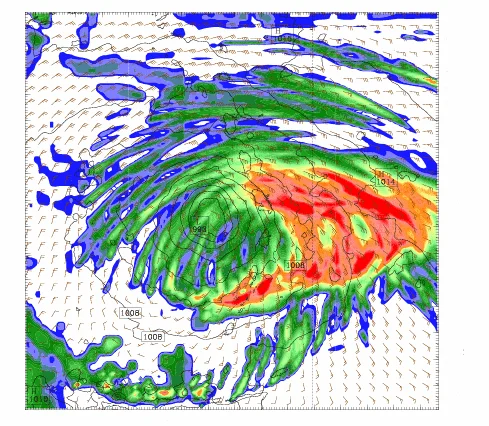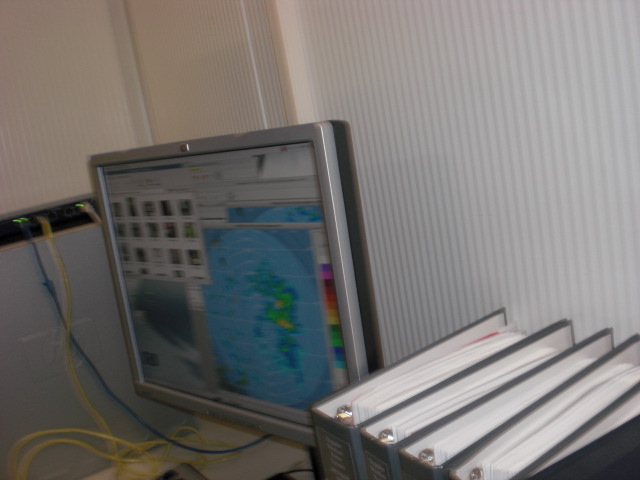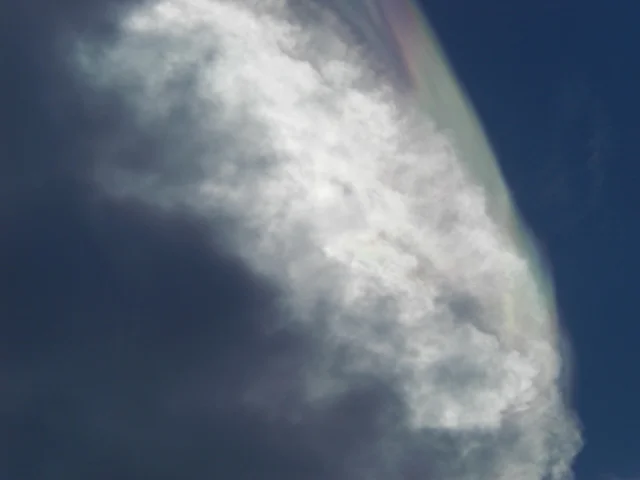Kim Whitehall, Ph.D.
July 2014
I am currently a Post-Doctoral Research Fellow in the Department of Physics, Howard University, Washington, D.C. Prior to this position I have been working on my doctoral studies at Howard University contributing to area of identifying and characterizing mesoscale convective complexes (MCCs) in West Africa using satellite datasets.
Background and significance
MCCs are meteorologically small-scaled (~ 105 km2), short-lived (between 9 to 24 hours), high precipitation events that significantly contribute to monthly precipitation variability, possess an undefined capacity to alter regional mass, moisture and heat fluxes, and thus global energy and water distributions, and present considerable socio-economic impacts to local and international disaster response agencies (Maddox, 1980; Laing and Fritsch, 1993). Approximately 400 MCCs occur globally, of which approximately one-fifth occur in W. Africa during the summer months alone. The non-discriminatory socio-economic geospatial distribution of these features correlates with currently and projected densely populated locations. Additionally, the convective nature of MCCs raises questions regarding the seasonal variability and frequency in current and future climates, amongst others. As such, a high scientific understanding of rainfall variability in current and future climates is a prudent factor for shaping countries’ responses to climate variability and climate change through adaptation and mitigation policies. But these features are identified on infrared satellite data via their cloud shield size, temperature and shape, and require highly spatially and temporally resolved dataset, thus making them difficult to analyze in long-term records. Graph theory is a computer science based subject area that can offer solutions to the problem of identifying extreme rainfall associated with weather features in highly resolved datasets – i.e., a solution to data mining in big data.
As such, the scope of my research is focused on creating and implementing cloud tracking program implementing graph theory, to facilitate identifying MCCs in infrared datasets and characterizing them with other types of datasets e.g., rainfall satellite based data, over long-term periods in a fully automated end-to-end evaluation fashion.
Research Accomplishments
My research at Howard University as a doctoral student and a post-doctoral researcher focused on developing and testing the “Grab ‘em, Tag ‘em, Graph ‘em” (GTG) algorithm. The development of this algorithm combined the expertise from atmospheric scientists within the Howard University Program in Atmospheric Sciences (HUPAS) program to include Drs. Gregory Jenkins and Belay Demoz; machine learning expertise within the Department of Systems and Computer Science, Howard University to include Dr. Muguzi Rwebangira; and climate science, big data methods, and sustainable software development expertise from the NASA's Jet Propulsion Laboratory (JPL) RCMES team to include Dr. Chris Mattmann , and the Apache Open Climate Workbench team.
The "Grab 'em, Tag 'em, Graph 'em" (GTG) algorithm, as outlined in Figure 1, is a fully automated graph-theory based algorithm for identifying MCCs in a time series of highly resolved infrared satellite images by (1) identifying cloud elements (CEs) - cloud areas of prescribed size and temperature - as the graph's Vertices; (2) determining the areas of overlap between CEs to define the graph's Edges as; and (3) defining cloud clusters (CCs) as CEs that correlated throughout time (Whitehall et al., 2013). The GTG allows for other variables (e.g. precipitation) from other datasets to be ingested and regridded for characterization / evaluation of the identified MCCs. The algorithm is exceptional unique compared to existing methods as it (1) innately and fully automatically handles the complex evolution of MCCs features that include merging and splitting of CEs in time, (2) it is easily transferable to long-term records of highly spatial and temporal resolved data, and encourages use in databases – especially graph databases (3) it facilitates fully automate characterization of MCCs in various datasets and engenders automatic evaluation of the features in datasets of various resolutions.
Figure 1: A schematic of the Grab 'em, Tag 'em, Graph 'em" (GTG) algorithm for detection and tracking of MCSs. The yellow and red circles represent cloud element areas on the infrared satellite image on the panel on left of the figure, and the corresponding graph nodes in the graph structure on the center panels of the figure. Taken from Whitehall et al., 2013.
The "Grab 'em, Tag 'em, Graph 'em" (GTG) algorithm can be found here, forked off the main Apache OCW project.
Current Research
My most recent research is based on the two core sciences of the "Grab 'em, Tag 'em, Graph 'em" (GTG) algorithm – atmospheric science and computer science. On the atmospheric science side, the research is focused on (1) implementing the GTG algorithm in long-term records of data to characterize the rainfall associated with MCCs in West Africa, and (2) utilizing the GTG algorithm with model data in a forecasting application. On the computer science side of the project, research involves increasing the efficiency of the algorithm, especially the graph traversal methods and the file handling. As such, research on this side of the algorithm is also considering graph database implementations and performance.
References
Maddox, R. A. (1980). Mesoscale convective complexes. Bulletin of the American Meteorological Society, 61, 1374-1387.
Laing, A. G., & Fritsch, J. M. (1993). Mesoscale Convective Complexes in Africa. Monthly Weather Review, 121, 2254-2263.
Whitehall, K. D., et al. "An Automated Method to Identify Mesoscale Convective Complexes (MCCs) Implementing Graph Theory." AGU Fall Meeting Abstracts. Vol. 1. 2013.







